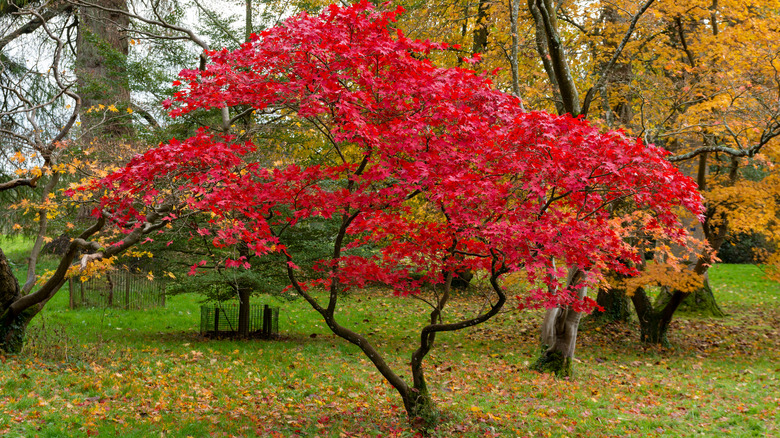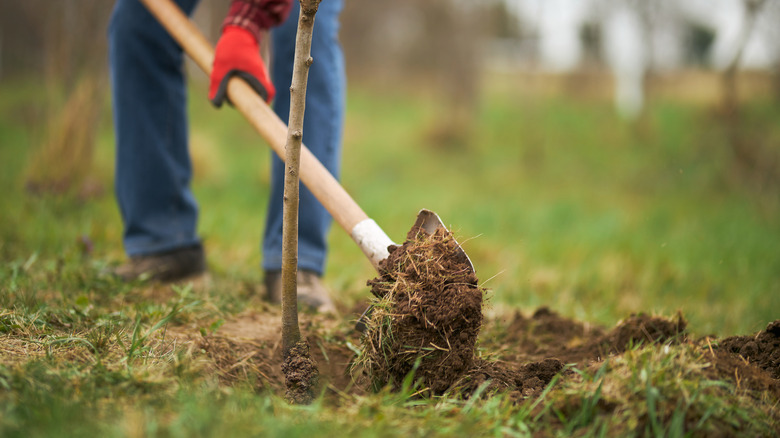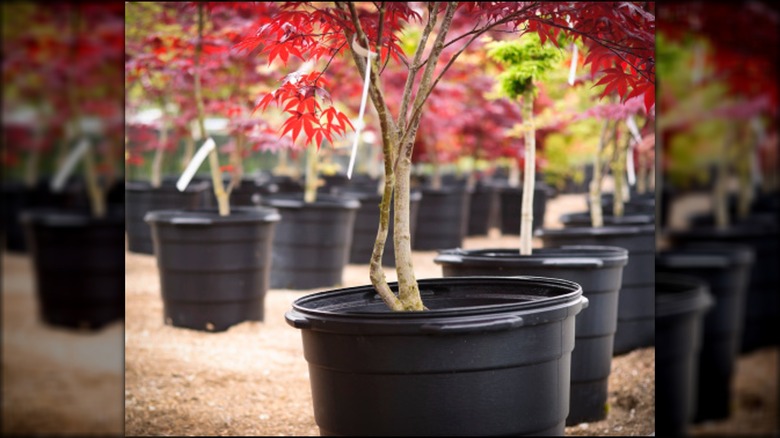Our Master Gardener Tells Us The Best Time Of Year To Plant A Japanese Maple Tree In Your Yard
Japanese maples add stunning shape and color to any space. Some cultivars only reach about 15 feet tall at maturity, making them a beautiful foundation tree to establish a carefully cultivated landscape. The largest species reach up to 25 feet tall, allowing them to stand beautifully as a solitary option in a yard. Although you can plant a Japanese maple at almost any time of year, the ideal time to place them in the ground is in the late fall after they have gone dormant for the season.
To choose the right tree for your space, identify the features you want. The most important factor is selecting a tree that is the ideal size. If you want an option you can plant within 10 feet of your home, a medium-sized tree that reaches no taller than 15 feet tall is perfect. Dwarf options are excellent for landscapes where you want them to blend in rather than make a larger statement. And, of course, the largest trees are a stunning addition to any yard. Whatever species of Japanese maple you choose, the basic rules for planting are the same.
Why fall is the best time to plant Japanese maple trees
It may seem logical that spring would be ideal for planting trees because they are bursting with new growth, but that is actually the very reason this is not the recommended time. After bud break, when young trees are supporting a flush of new growth, they need a lot of energy. The problem is they cannot fully access nutrients and water in the soil until after the roots are established. Transplanting always creates stress on a plant, and when the roots are disturbed while the plant is in most need of resources, it causes Japanese maples to become weak and more susceptible to disease and pests, like destructive spider mites. It can also be a challenge to keep a sapling sufficiently watered in the heat of summer if the roots have not had time to grow deeper into the ground.
By planting a Japanese maple in late fall, after it has gone dormant, the tree has plenty of time to establish its roots without the pressure of supporting new growth. In northern regions where the ground freezes, the perfect time to plant is about a month before that happens — usually late October or November. In warmer climates further south, you can plant Japanese maples into December. Just be sure to give them a few months to settle in before spring arrives.
How to plant your Japanese maple
Give your Japanese maple everything it needs to get the best start in its new home by thoroughly preparing the soil. First, dig a hole twice as wide and deep as the tree's existing rootball. Mix that soil with one-third of high-quality compost. Backfill the hole with amended soil to the point where the tree's existing soil line is even with the ground. If the root ball is wrapped in burlap or any other covering, remove it. Although natural burlap will eventually decompose, synthetic or treated options will not. Keeping these types of covering on can keep the roots from growing or girdle the trunk of the tree, causing it to die.
Place your tree in the ground and gently, but firmly, finish filling in the hole with your soil. Gently tamp down the soil with your foot and secure the tree with stakes, if needed. Water the area thoroughly. If you live in an area where the ground does not freeze, you may need to water your young sapling a few times over the winter if the ground is dry 1 inch below the surface of the soil. In the spring, your tree will have the nutrients it needs to start growing strong and healthy after spending late fall and winter preparing for its big debut.


